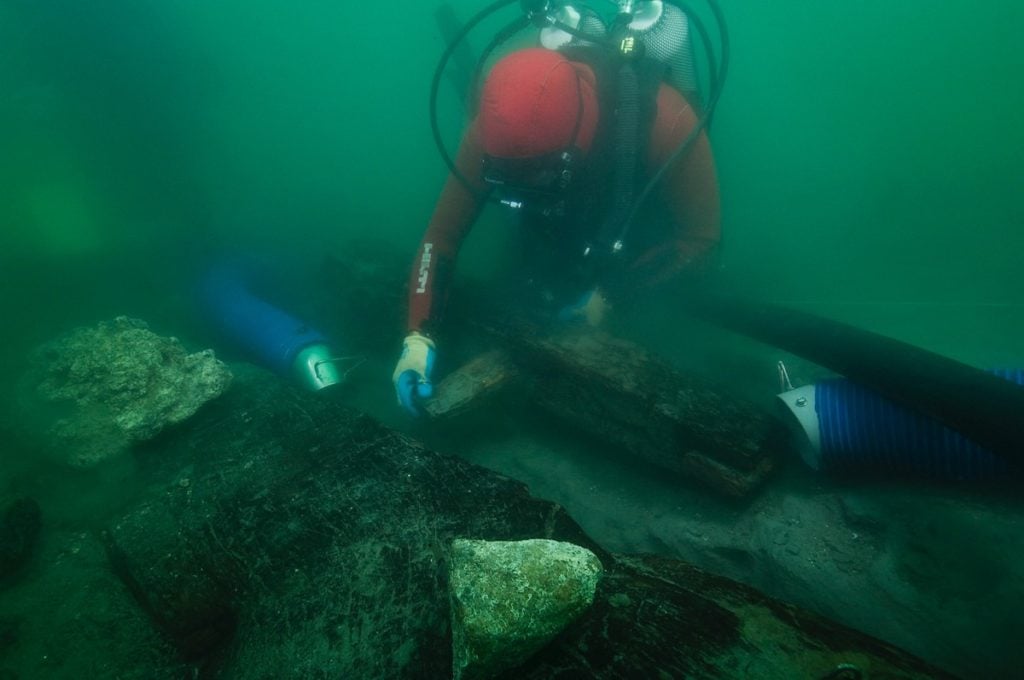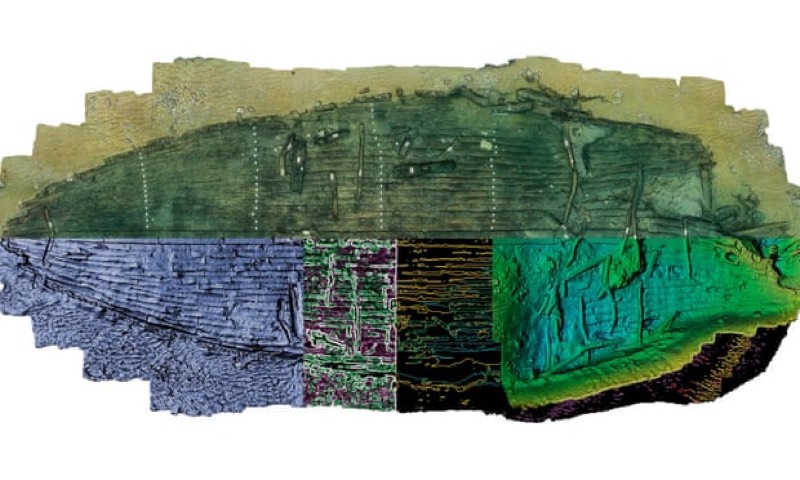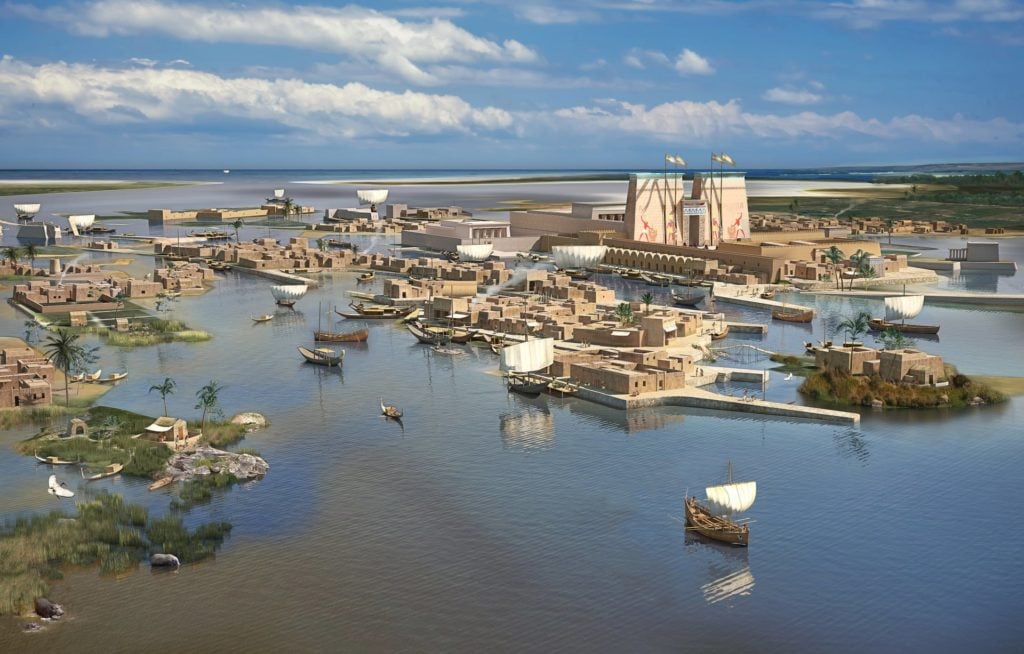Art World
The Discovery of a Shipwreck Off the Coast of Egypt Has Finally Vindicated an Ancient Greek Historian
The ancient ship was discovered amid the sunken ruins of the Egyptian city of Thonis-Heracleion.

The ancient ship was discovered amid the sunken ruins of the Egyptian city of Thonis-Heracleion.

The remains of a long-lost vessel once described by the ancient Greek historian Herodotus have been discovered by researchers off the northern coast of Egypt.
The ship, called a baris, was detailed by the historian around 450 BC in a section of his Histories, which describe the ancient Greek, north African, and West Asian worlds.
But the unusual boat—which Herodotus wrote had long internal ribs, a crescent-shaped hull, papyrus sails, planks made of acacia trees, and a rudder installed in a hole in the keel—was never confirmed by any archaeological evidence until now.
Fragments of the vessel, which has been officially dubbed Ship 17, were uncovered near the remains of the ancient city of Thonis-Heracleion, a major Egyptian trading port that fell victim to flooding and soil liquefaction and abruptly sank into the Mediterranean near the end of the second century BC.

An artistic treatment of the discovered shipwreck. The upper half of the model illustrates the wreck as excavated. Below this, unexcavated areas are mirrored to produce a complete vessel outline. Photo courtesy of Christoph Gerigk/Franck Goddio/Hilti Foundation
“It wasn’t until we discovered this wreck that we realized Herodotus was right,” Damian Robinson, director of the Oxford Centre for Maritime Archaeology, told the Guardian. “What Herodotus described was what we were looking at.”
“The joints of the planking of Ship 17 are staggered in a way that gives it the appearance of ‘courses of bricks’, as described by Herodotus,” notes a paper by Alexander Belov published in The International Journal of Nautical Archaeology detailing the findings. He has also written a book published by the Centre for Maritime Archaeology titled Ship 17: A Baris From Thonis-Heracleion.

A recreation of what the sunken port-city of Thonis-Heracleion may have looked like. Image by Yann Bernard © Franck Goddio/Hilti Foundation.
The sunken city was first rediscovered in 2000 by an expedition led by maritime archaeologist Franck Goddio. His team has since uncovered the remains of an ancient temple, statues, golden coins, and some 70 sunken ships.